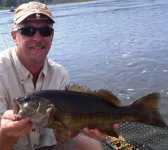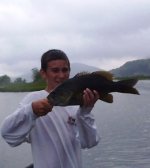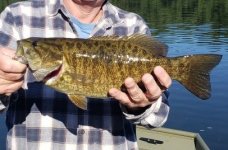krayfish2
Well-known member
Been thinking and talked with my nephew about the bass issues, removal of closed spawn season and different sections of the river system. Questions for those who fish Susky / Juniata (all branches)
So.....
Where have you seen the long/thin bass with vertical bars? I've caught these in low numbers in the Susky between Selinsgrove and Middletown. More frequently 5+ miles up the Juniata.
What about the short stocky bass that are almost all black? They are built much heavier and are differently colored. This accounts for a majority of the bass I catch in the main Susky and lower 5-10 miles of the Juniata.
Bass with growths, sores and blotchy skin? I see these in the main river from Harrisburg north to Liverpool.
Are the guys fishing the west branch seeing any of those freakish fish? How about Great Bend down past Sunbury? Has the state identified the exact borders where the problem fish start to become more common? What about the two fish types that almost appear to be different species? I'm starting to think there's going to be a pretty clear line where you start to see major irregularities and there's got to be a cause that's being overlooked or covered up.
Thoughts?
So.....
Where have you seen the long/thin bass with vertical bars? I've caught these in low numbers in the Susky between Selinsgrove and Middletown. More frequently 5+ miles up the Juniata.
What about the short stocky bass that are almost all black? They are built much heavier and are differently colored. This accounts for a majority of the bass I catch in the main Susky and lower 5-10 miles of the Juniata.
Bass with growths, sores and blotchy skin? I see these in the main river from Harrisburg north to Liverpool.
Are the guys fishing the west branch seeing any of those freakish fish? How about Great Bend down past Sunbury? Has the state identified the exact borders where the problem fish start to become more common? What about the two fish types that almost appear to be different species? I'm starting to think there's going to be a pretty clear line where you start to see major irregularities and there's got to be a cause that's being overlooked or covered up.
Thoughts?











